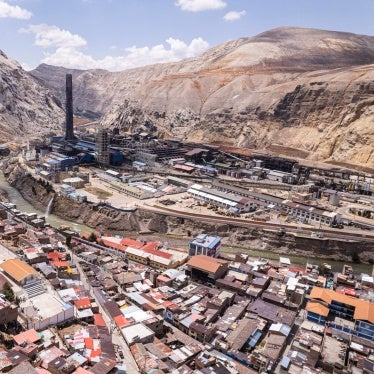Across rural Brazil, ordinary people are being poisoned from highly hazardous pesticides sprayed near their homes, schools, and workplaces. This was one of the main findings of a report released by Human Rights Watch on July 20. We talked to people in farming communities, indigenous communities, quilombos, and rural schools—across all regions of Brazil. They told us of experiencing vomiting, nausea, headache, and dizziness, the symptoms of acute pesticide poisoning.
In a few months Brazil’s Congress will consider a bill that would further weaken the regulatory framework for pesticides. Among its many proposals, the bill would substantially reduce the role of the health and environment ministries, the agencies with expertise in the impact of pesticide use, in determining which pesticides can be used in Brazil. Congress should vote against the bill.
But even before that debate takes place in Congress, there’s an urgent need for reform. Brazil lacks a national regulation to require a buffer zone around schools, homes and other sensitive sites for ground spraying.
In most parts of Brazil, it is entirely legal to spray highly hazardous pesticides up to the walls of rural schools or inhabited buildings. Of the 27 states in Brazil, 19 do not have buffer zones for ground spraying.
In comments to the media, the Ministry of Agriculture has indicated that it is willing to do create these buffer zones. Luis Rangel, the director of the Agricultural Defense Secretariat (SDA) told the national news program Jornal Nacional that he would “immediately abide” with the proposal to establish and enforce a nationwide regulation for a buffer zone around sensitive sites for all forms of ground spraying. Similarly, he told CBN radio that this proposal was “perfectly acceptable” and “within [the ministry’s] goals.”
It is within Federal authority to set such standards for a buffer zone for ground spraying. The national Pesticide Law comes under articles 23 and 24 of the Constitution, which give Federal authorities joint jurisdiction along with States. And one of the primary goals of a buffer zone is to protect the human health, an issue also under Federal jurisdiction.
If indeed adopted and enforced, this commitment would make a real difference in the lives of many rural Brazilians.
But laws are not enough. They need to be obeyed. Our research also found that the buffer zone prohibiting aerial spraying within 500 meters of inhabited sites is often ignored. Even in the few states that do stipulate buffer zones for ground spraying, those rules are not routinely respected.
Brazilian authorities do not know how many Brazilians are being sprayed from airplanes over people’s houses, or from tractors beside classroom windows. They know even less about the health and environmental impact.
Brazilian authorities should undertake an urgent, thorough and time-bound review of the impact of pesticides on the health of rural communities. While doing this, Brazil should impose a moratorium on aerial spraying and impose and enforce an immediate prohibition on ground spraying near sensitive sites. The Ministry of Agriculture has made a commitment. Now it should transform the commitment into action.











